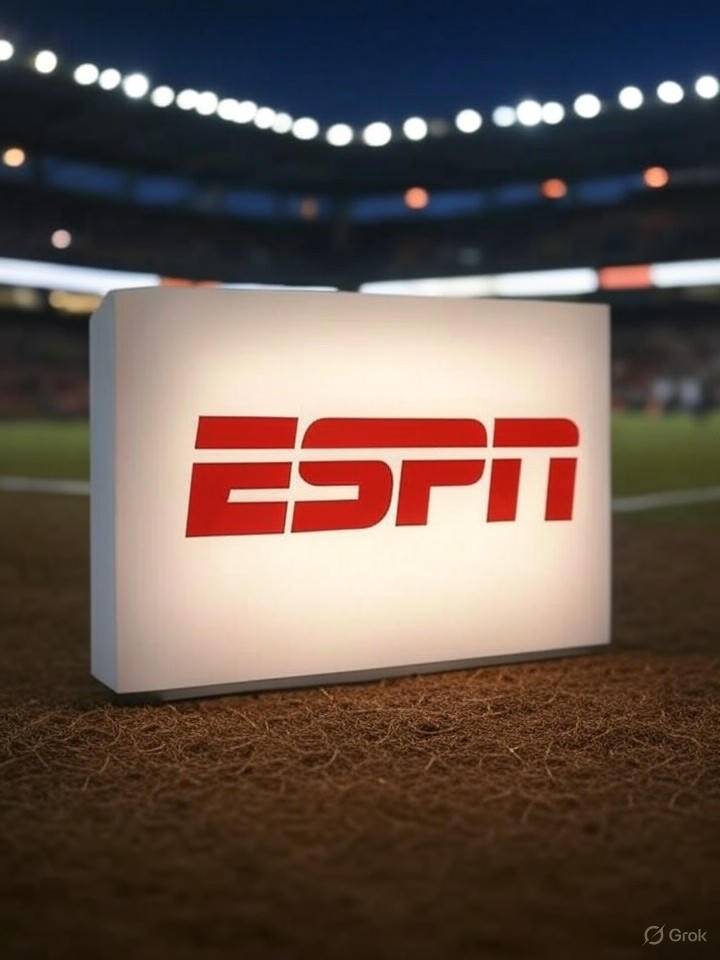ESPN’s long-anticipated direct-to-consumer streaming service is set to debut on Aug. 21, marking a pivotal shift for the sports media giant as it seeks to capture cord-cutters and digital natives in an increasingly fragmented viewing market. The service, simply named ESPN, will bundle all of the network’s linear channels, including ESPN, ESPN2, ESPNU, and others, along with ESPN+ content, offering subscribers access to over 47,000 live events annually, on-demand replays, and original programming.
This launch comes after years of speculation and strategic pivots by parent company Walt Disney Co., which has been navigating the decline of traditional cable bundles. According to details shared in a recent earnings call, the platform will feature enhanced personalization, such as customized “SportsCenter” feeds, integrated betting options, and advanced statistical analysis, all accessible via an upgraded ESPN app on mobile and connected TV devices.
A Strategic Response to Cord-Cutting Trends
Industry analysts view this move as ESPN’s bold bet to reclaim control over its distribution amid shrinking pay-TV subscriptions. The service’s pricing at $29.99 per month positions it as one of the pricier standalone options, yet it undercuts some cable packages while providing comprehensive sports coverage without requiring a traditional TV provider.
Disney executives have emphasized that the offering will include premium rights to leagues like the NFL, NBA, MLB, and college sports, making it a one-stop shop for fans. As reported by CNBC, the launch date of Aug. 21 aligns with the ramp-up to the NFL season, potentially boosting early adoption with high-profile games.
Features and Technological Enhancements
Beyond live sports, the platform promises innovative features like multi-view streaming for simultaneous events and AI-driven recommendations tailored to user preferences. This builds on ESPN+’s existing library, which already includes exclusive UFC fights and niche sports, now expanded to encompass the full suite of ESPN’s broadcast assets.
Sources indicate that additional rollouts, such as deeper integration with Disney’s ecosystem including Hulu and Disney+, could follow, allowing bundled savings. For instance, combining ESPN with Hulu and Disney+ might cost around $35 monthly, as noted in coverage from WFMY News 2, appealing to families seeking value in a multi-service household.
Market Implications and Competitive Positioning
The timing is crucial, as it precedes the fall sports calendar and positions ESPN against rivals like Peacock and Paramount+, which have carved out niches in live sports streaming. Disney’s partnership with Hearst Communications adds depth to the content lineup, ensuring a robust mix of studio shows and documentaries.
Recent updates from Variety highlight that the service will also incorporate extended NFL rights and even WWE events, broadening its appeal beyond traditional sports enthusiasts. This could pressure competitors to accelerate their own offerings, potentially reshaping how sports rights are negotiated in the digital era.
Challenges and Future Outlook
However, challenges loom, including the high price point that might deter casual viewers, especially with economic uncertainties. Posts on X from industry watchers, such as those from Front Office Sports, suggest enthusiasm but also skepticism about whether $29.99 justifies the value amid a crowded field of bundles like Venu Sports from ESPN, Warner Bros. Discovery, and Fox.
Looking ahead, Disney has indicated that the service will evolve with user feedback, possibly adding more international content or virtual reality experiences. As Reuters detailed, this launch is part of a broader strategy to stem losses in Disney’s streaming division, aiming for profitability by leveraging ESPN’s brand loyalty.
Industry-Wide Ripple Effects
For media insiders, this debut underscores a fundamental transformation in content delivery, where sports—once the linchpin of cable—now drive standalone digital platforms. The service’s success could influence future deals, with leagues demanding higher fees for streaming rights.
Ultimately, ESPN’s entry into direct-to-consumer streaming on Aug. 21 may redefine fan engagement, blending live action with data-rich interactivity in ways that traditional broadcasts never could, setting the stage for the next chapter in sports media evolution.




 WebProNews is an iEntry Publication
WebProNews is an iEntry Publication